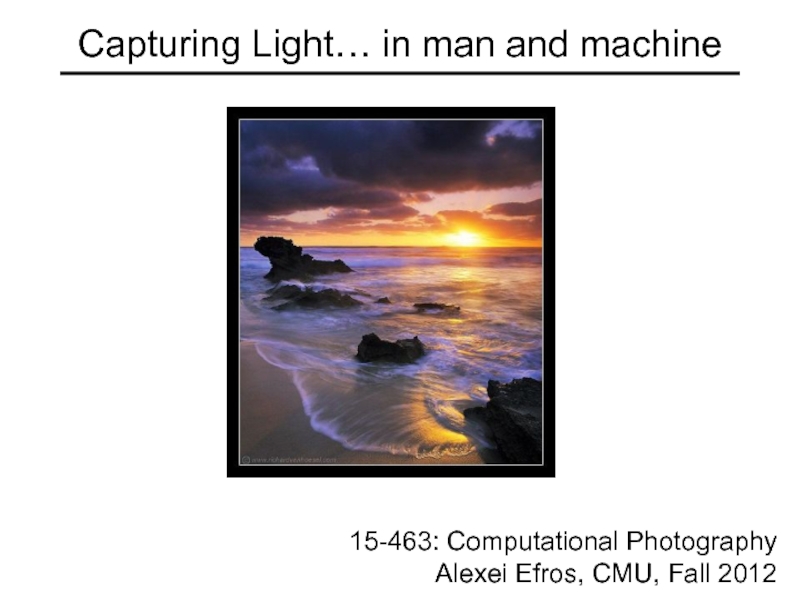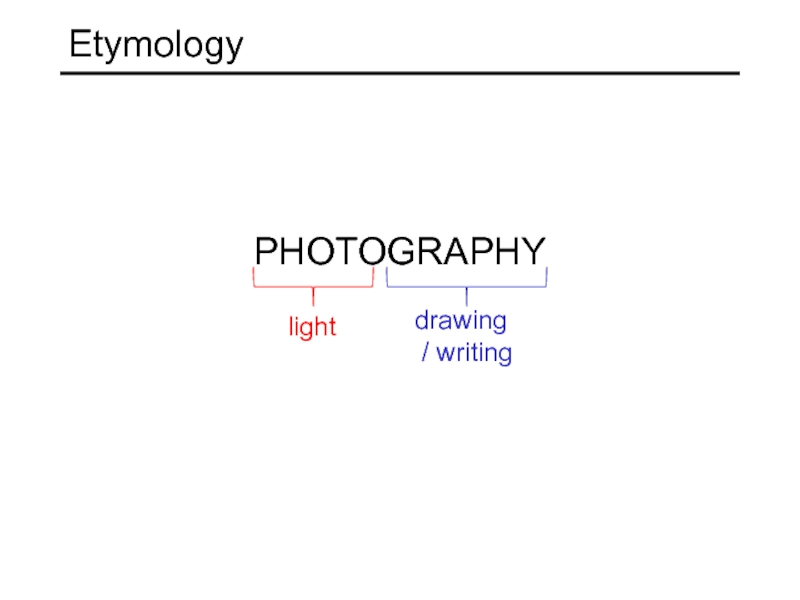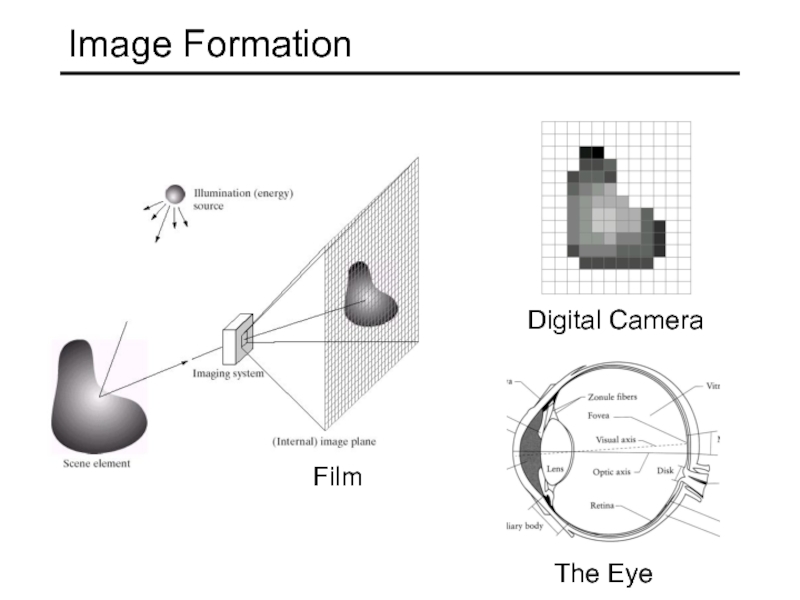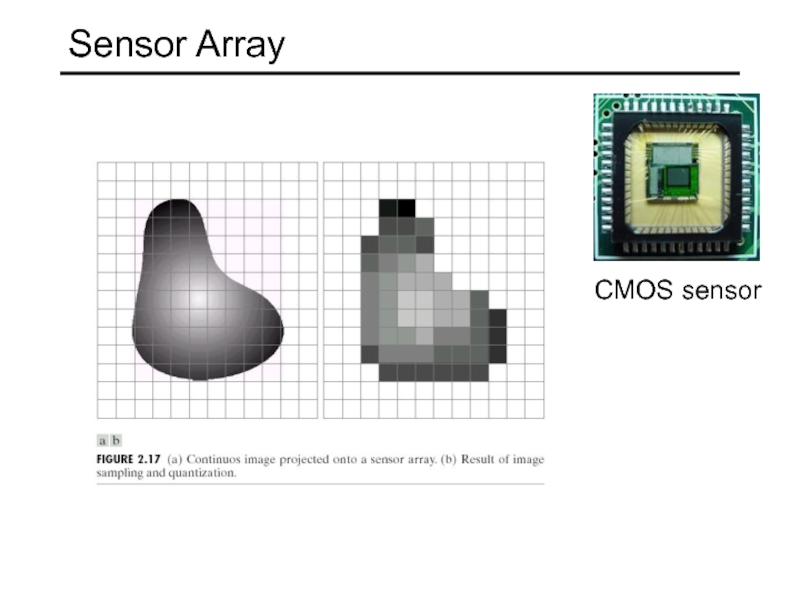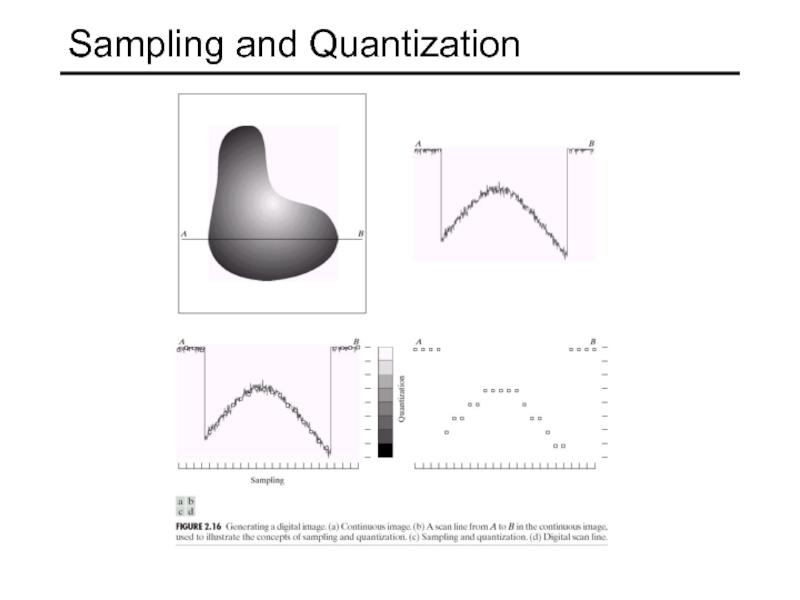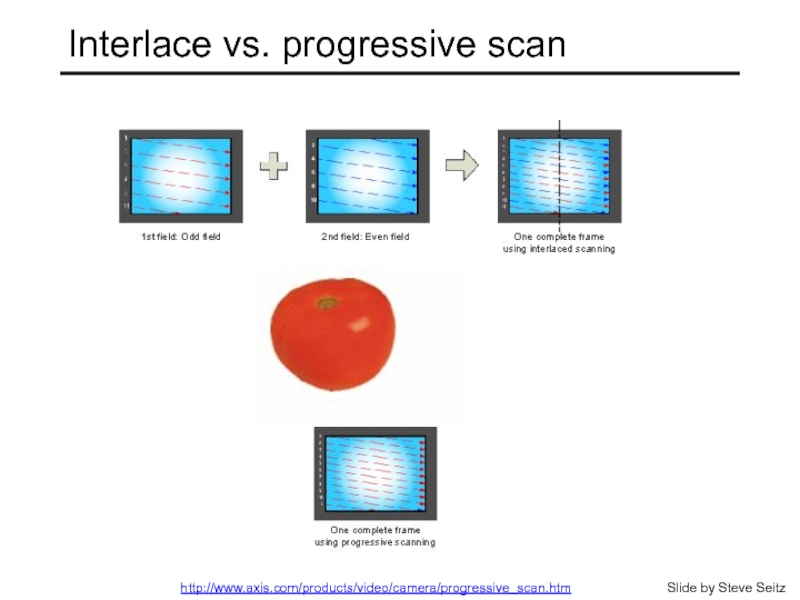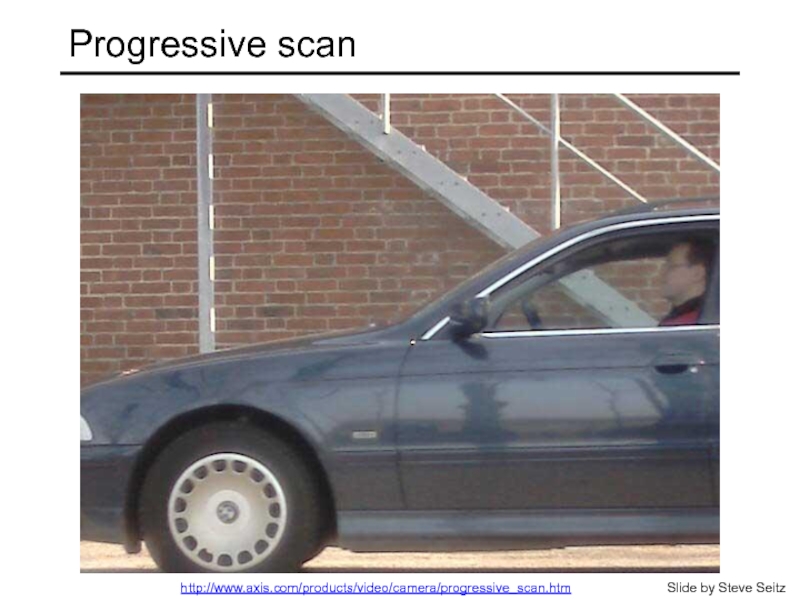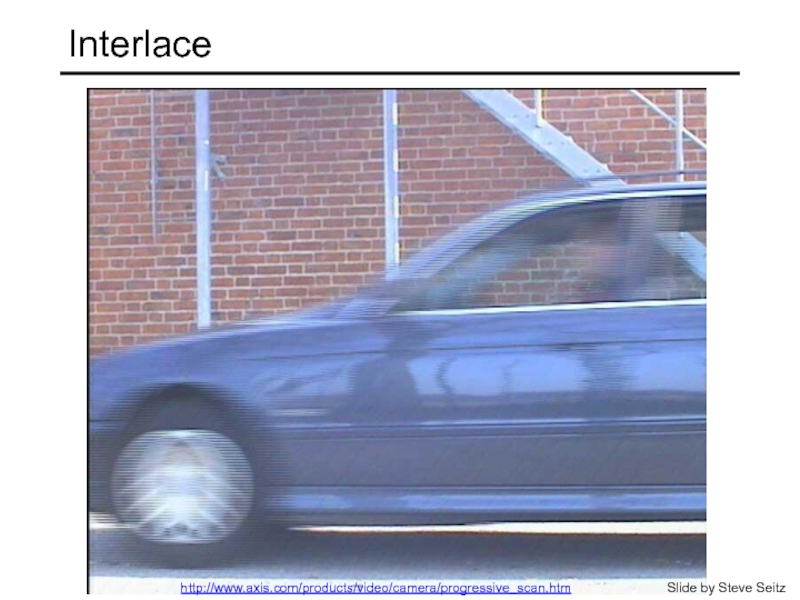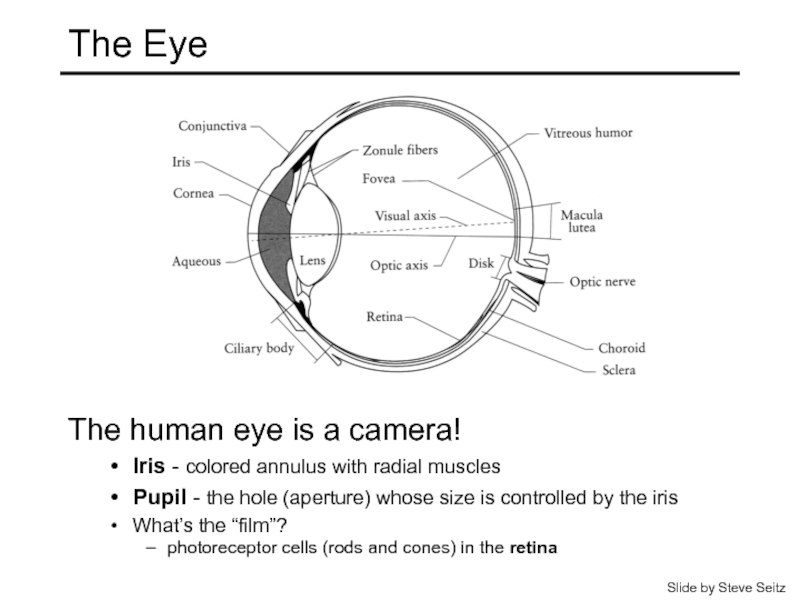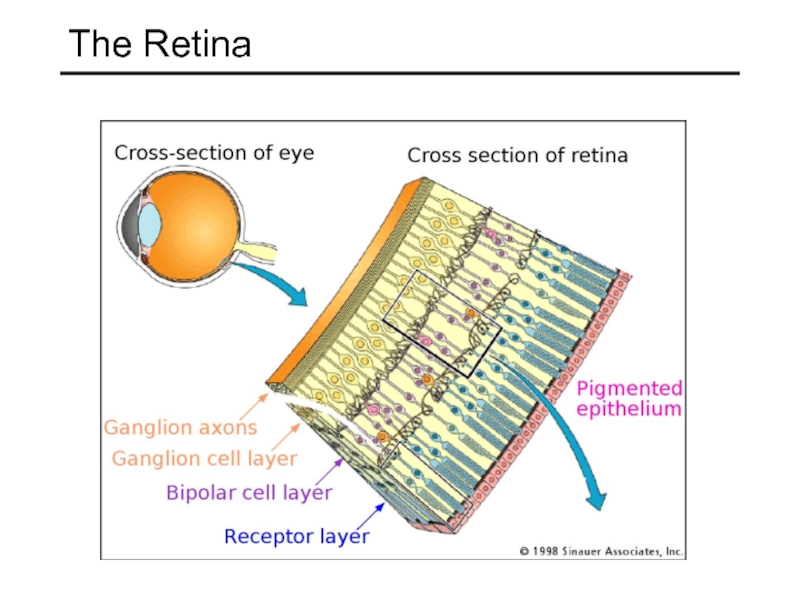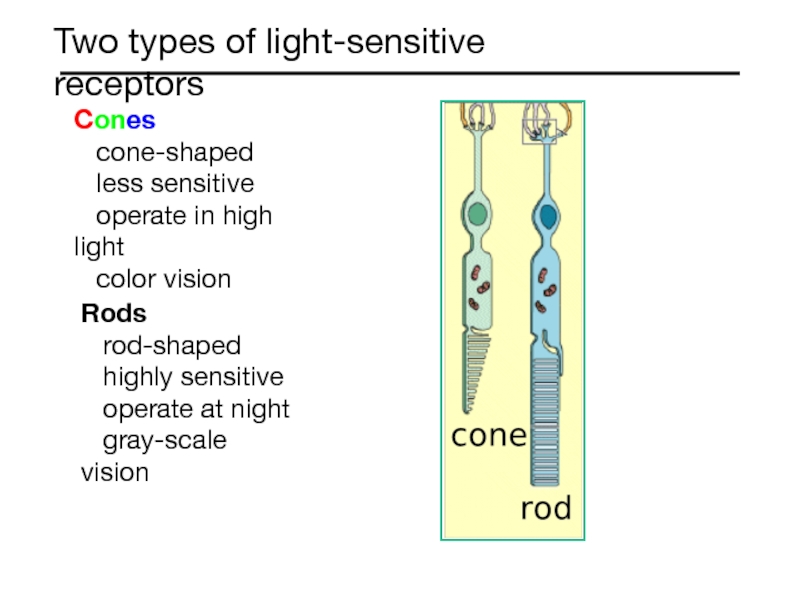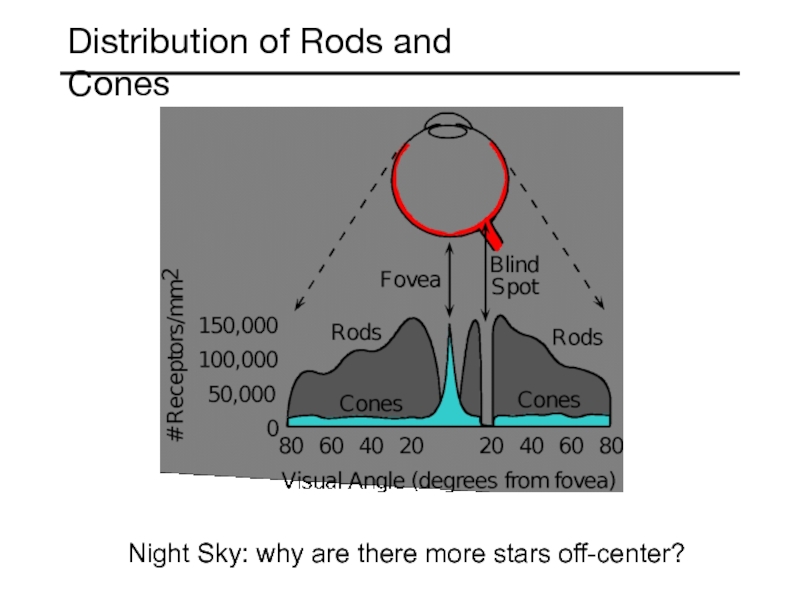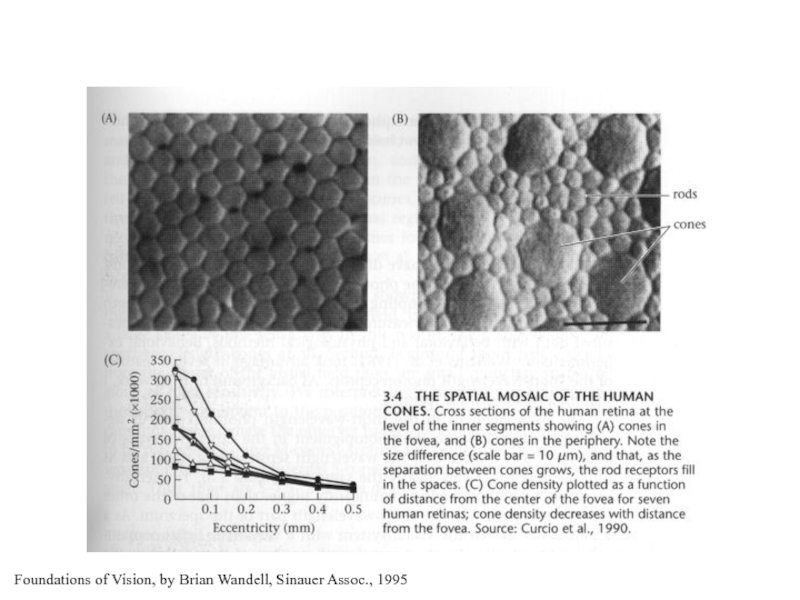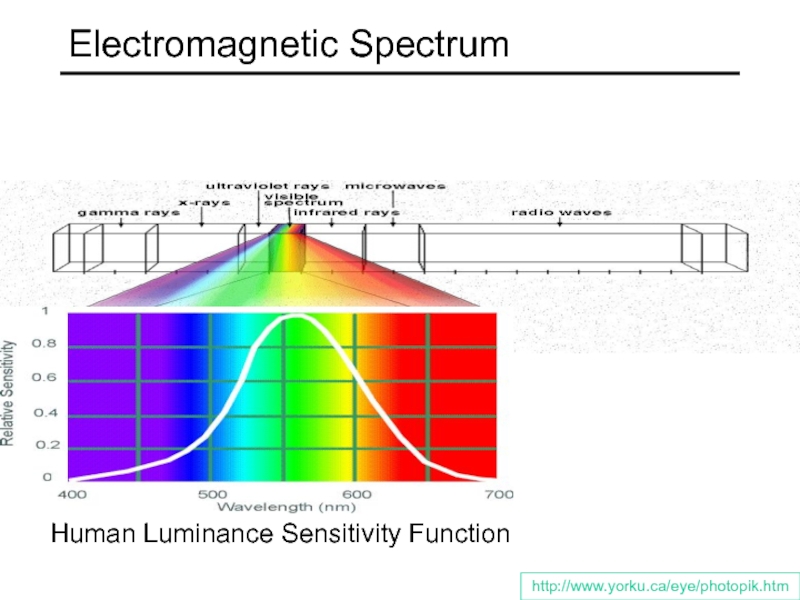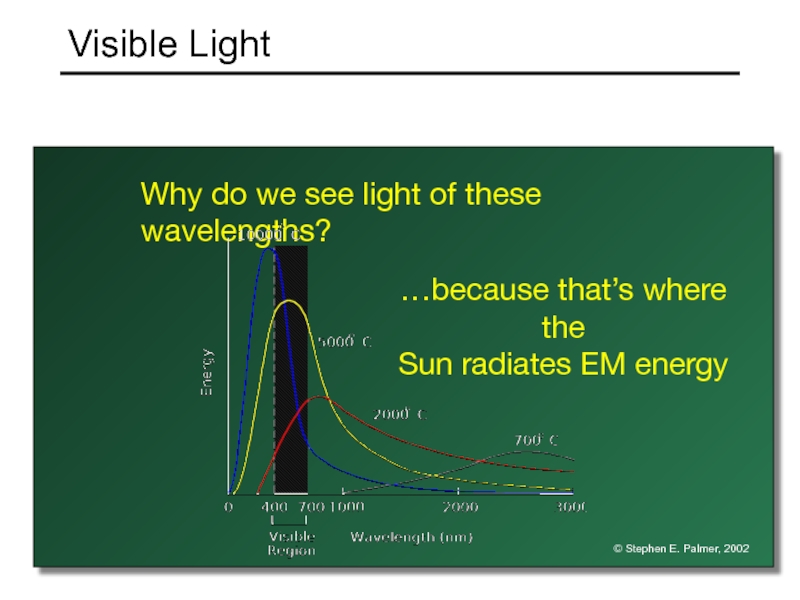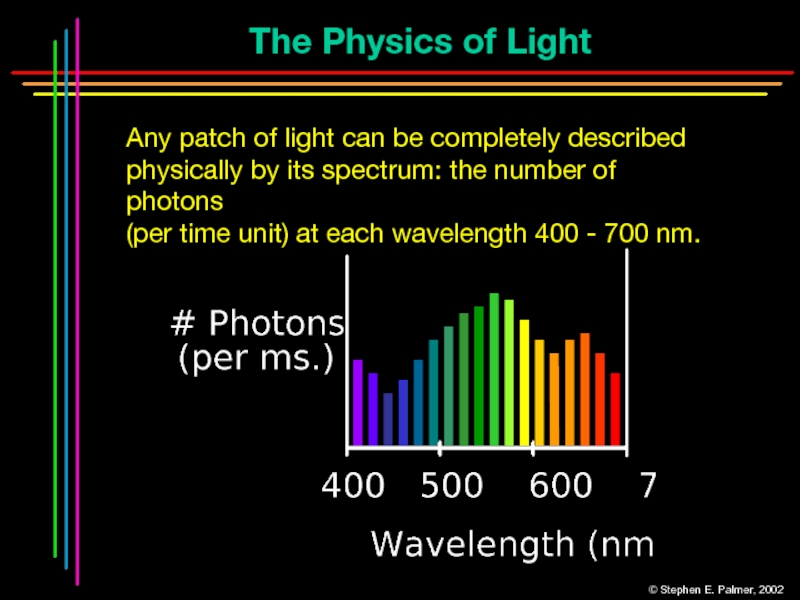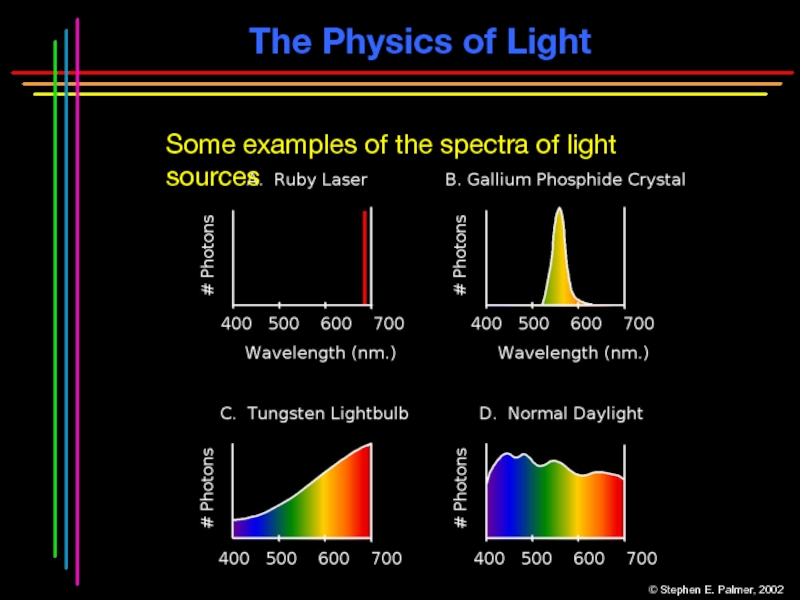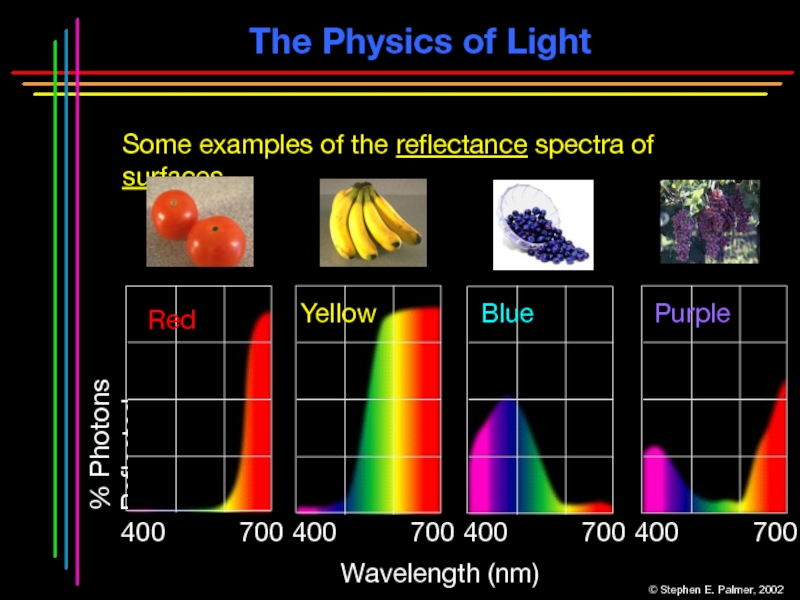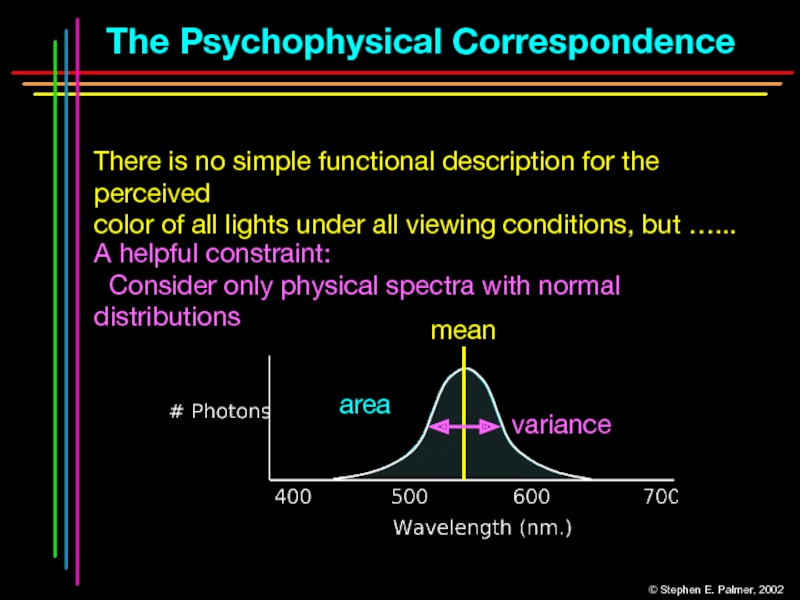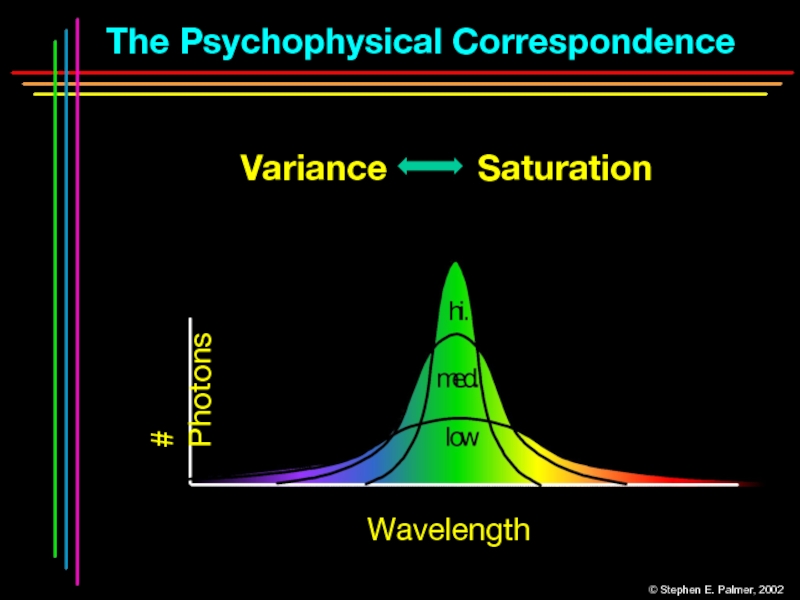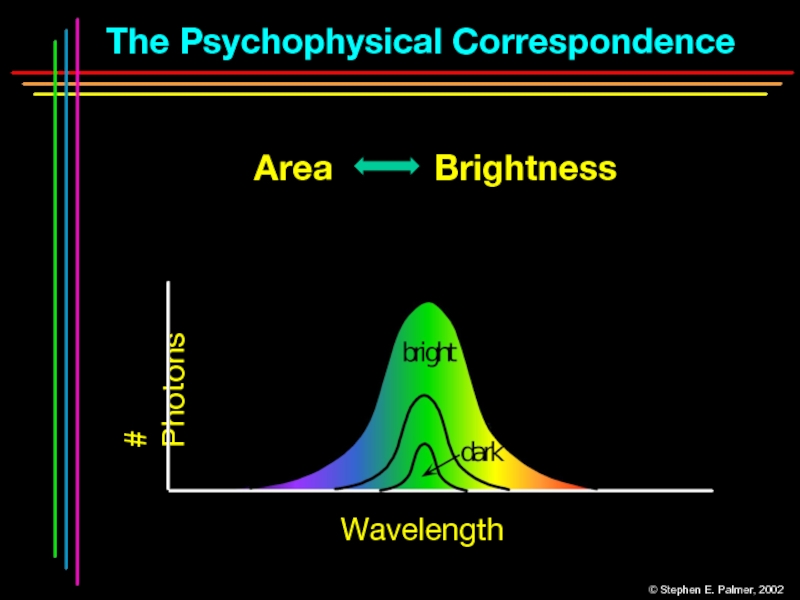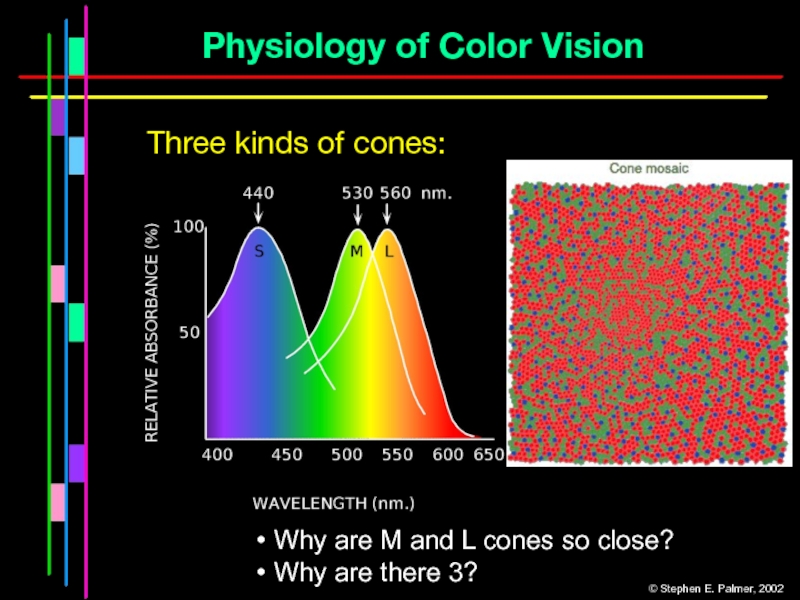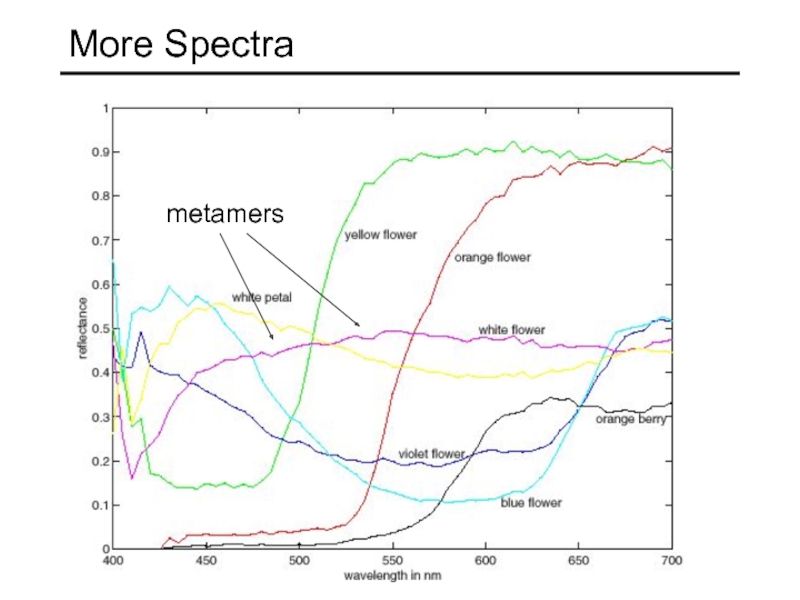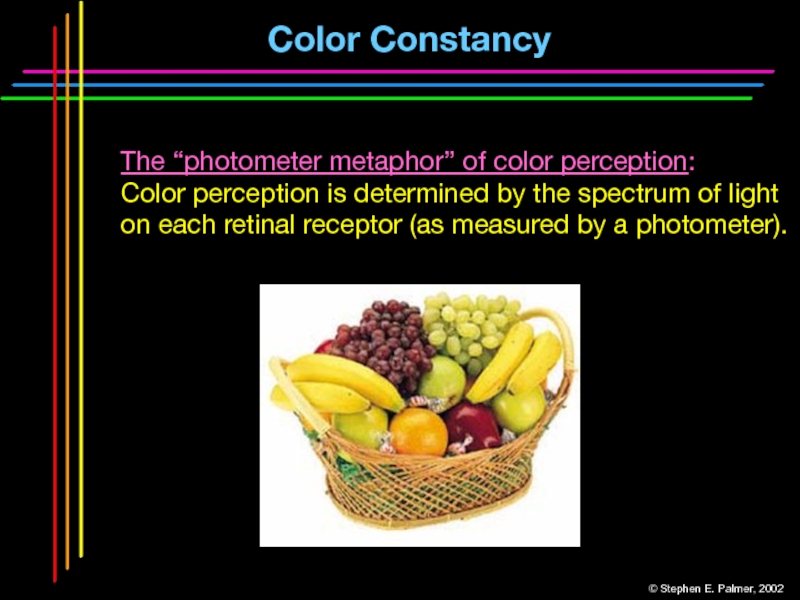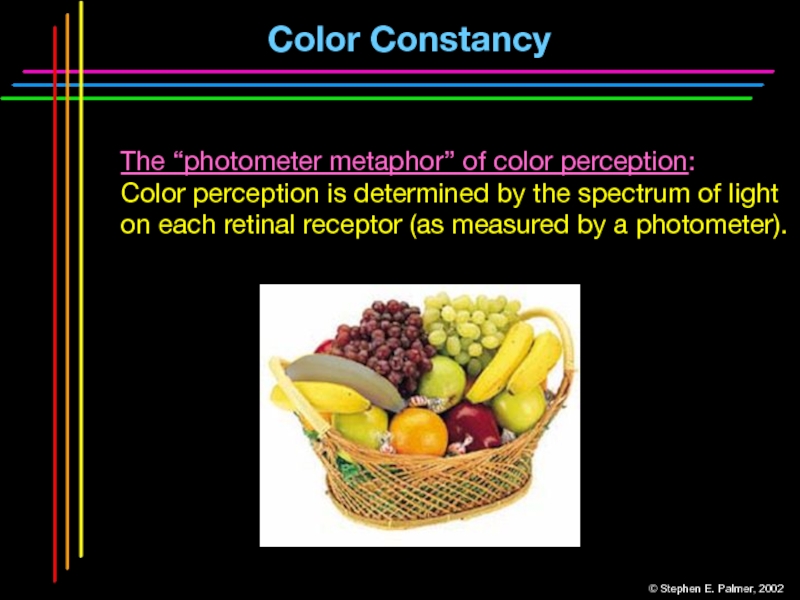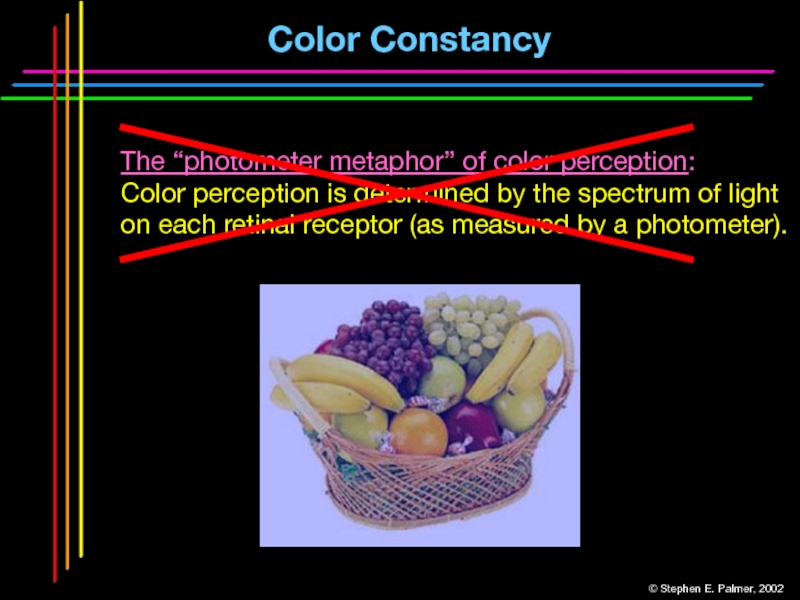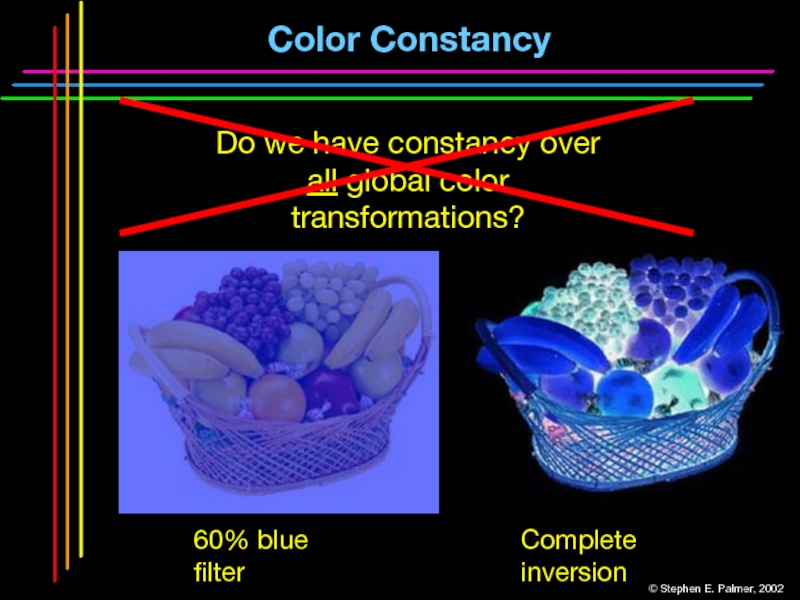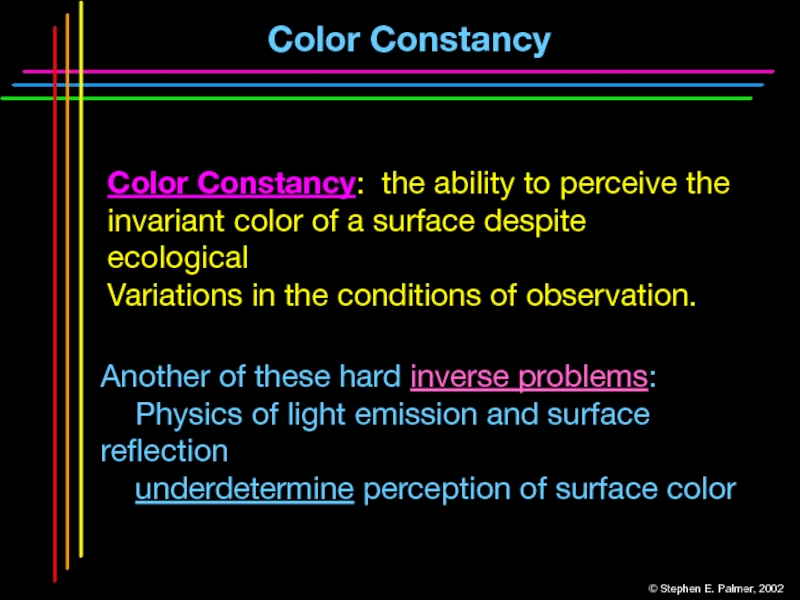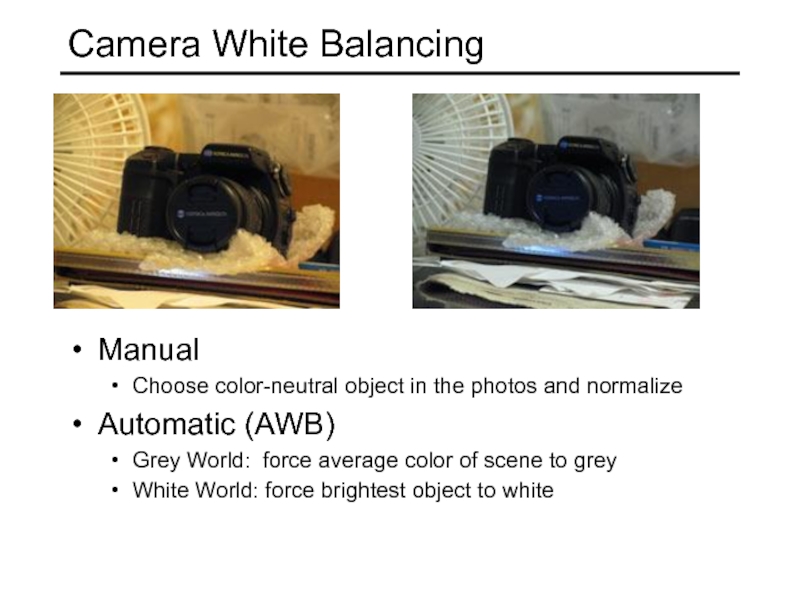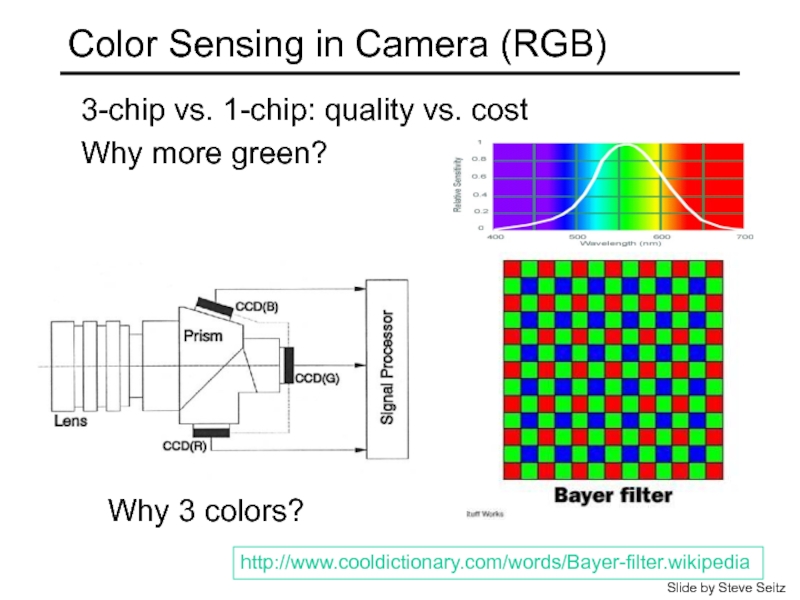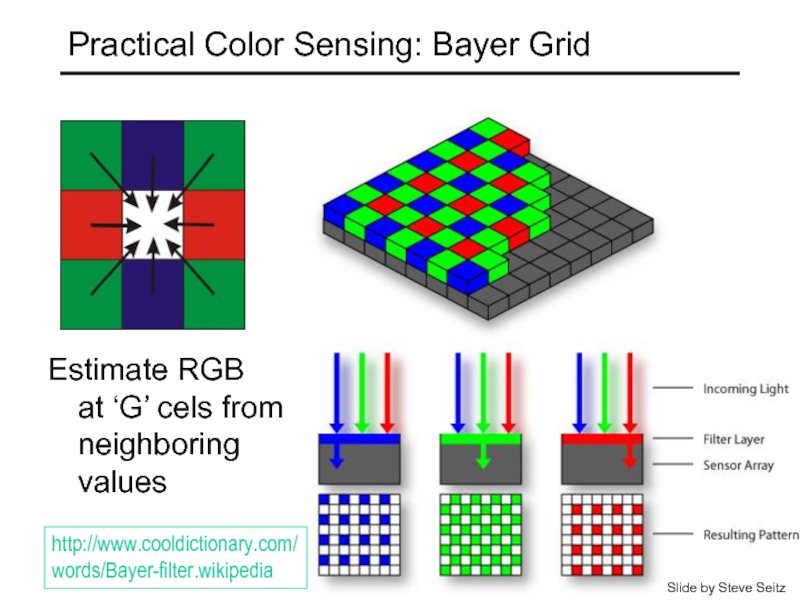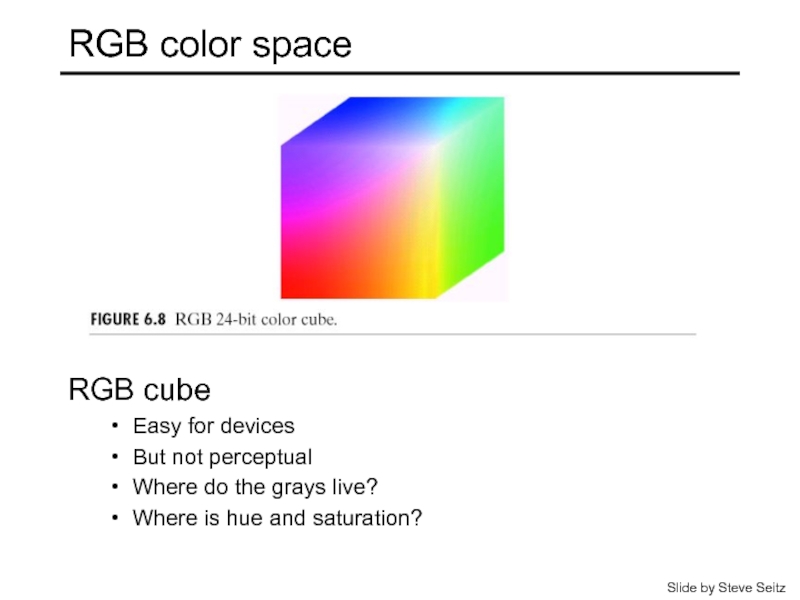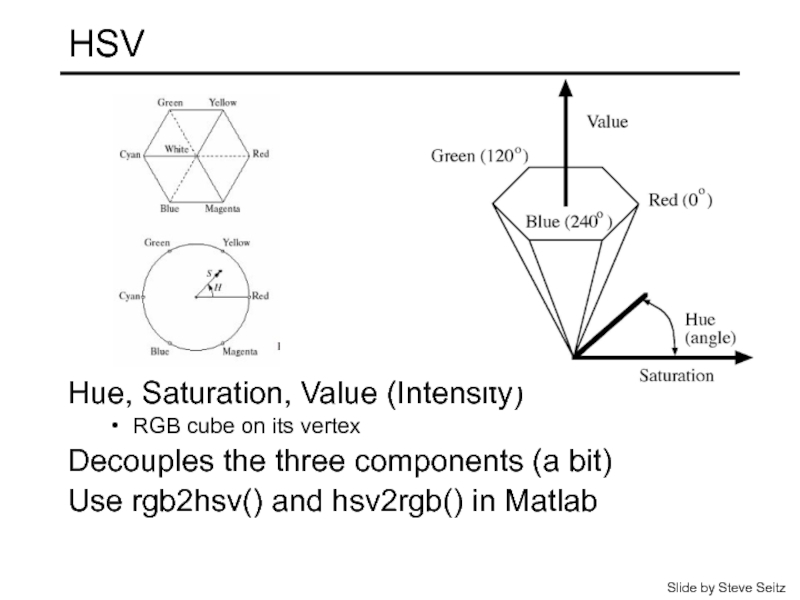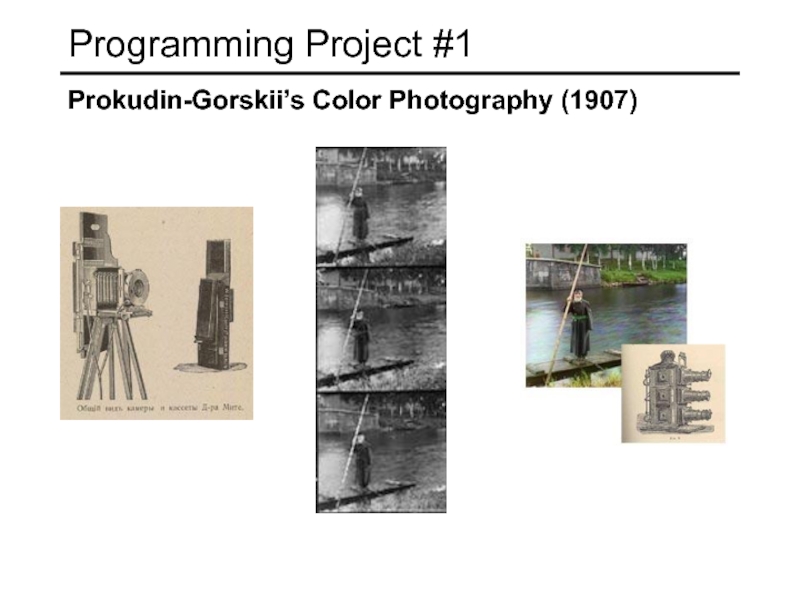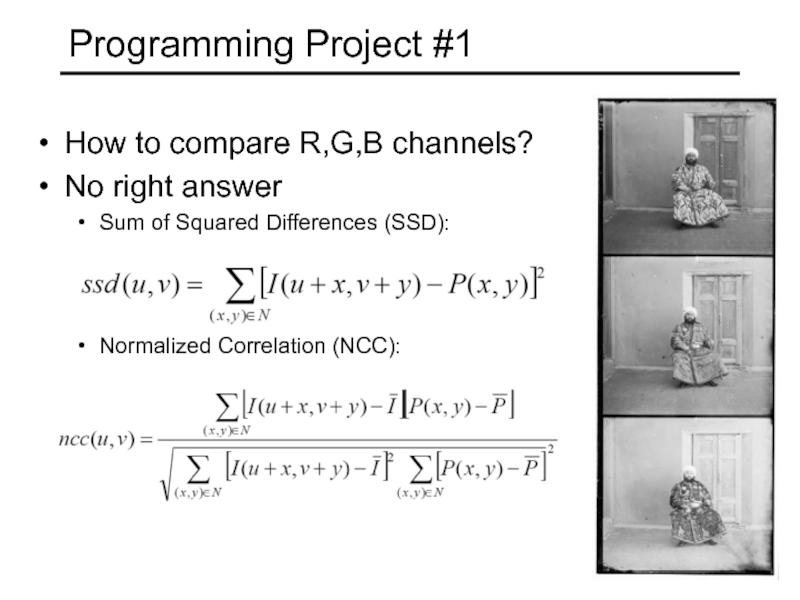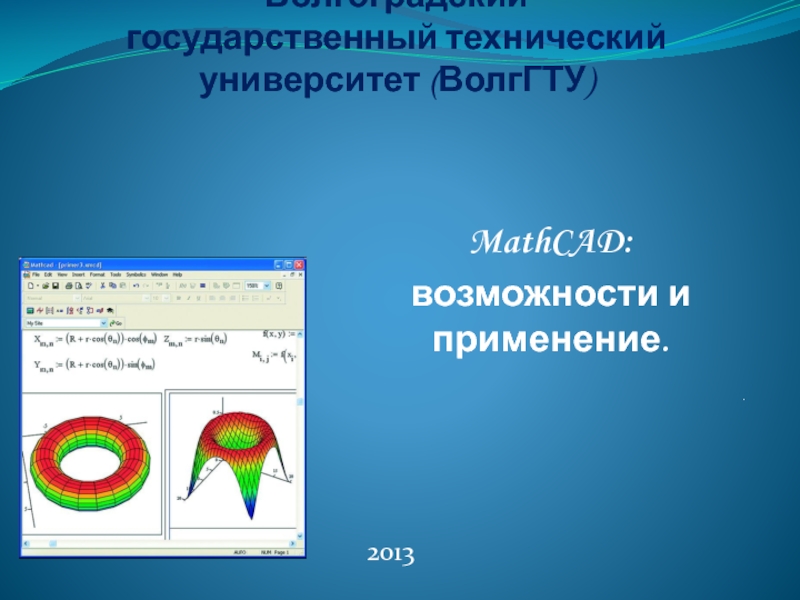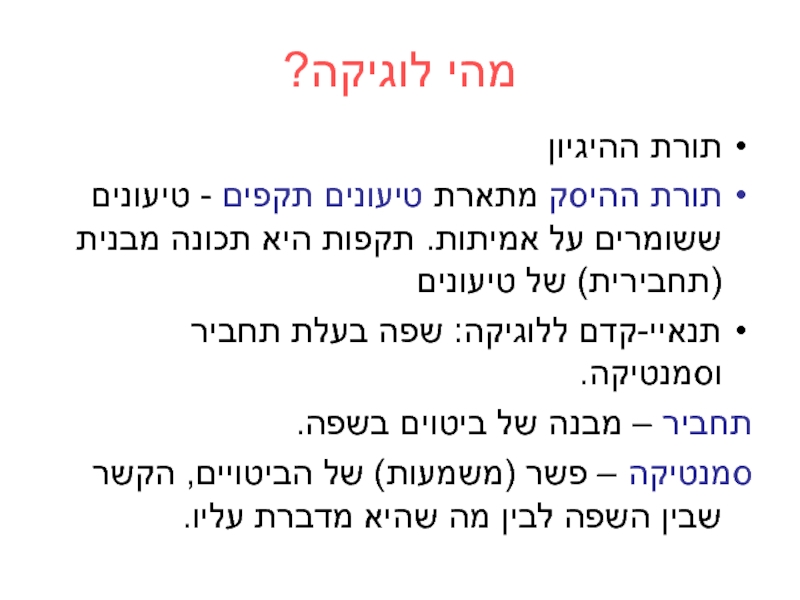- Главная
- Разное
- Дизайн
- Бизнес и предпринимательство
- Аналитика
- Образование
- Развлечения
- Красота и здоровье
- Финансы
- Государство
- Путешествия
- Спорт
- Недвижимость
- Армия
- Графика
- Культурология
- Еда и кулинария
- Лингвистика
- Английский язык
- Астрономия
- Алгебра
- Биология
- География
- Детские презентации
- Информатика
- История
- Литература
- Маркетинг
- Математика
- Медицина
- Менеджмент
- Музыка
- МХК
- Немецкий язык
- ОБЖ
- Обществознание
- Окружающий мир
- Педагогика
- Русский язык
- Технология
- Физика
- Философия
- Химия
- Шаблоны, картинки для презентаций
- Экология
- Экономика
- Юриспруденция
Capturing Light… in man and machine презентация
Содержание
- 1. Capturing Light… in man and machine
- 2. PHOTOGRAPHY light drawing / writing Etymology
- 3. Image Formation Digital Camera The Eye Film
- 4. Sensor Array CMOS sensor
- 5. Sampling and Quantization
- 6. Interlace vs. progressive scan http://www.axis.com/products/video/camera/progressive_scan.htm Slide by Steve Seitz
- 7. Progressive scan http://www.axis.com/products/video/camera/progressive_scan.htm Slide by Steve Seitz
- 8. Interlace http://www.axis.com/products/video/camera/progressive_scan.htm Slide by Steve Seitz
- 9. The Eye The human eye is a
- 10. The Retina
- 11. Retina up-close
- 12. © Stephen E. Palmer, 2002 Cones
- 13. Rod / Cone sensitivity The famous sock-matching problem…
- 14. © Stephen E. Palmer, 2002 Distribution of
- 15. Foundations of Vision, by Brian Wandell, Sinauer Assoc., 1995
- 16. Electromagnetic Spectrum http://www.yorku.ca/eye/photopik.htm Human Luminance Sensitivity Function
- 17. Why do we see
- 18. The Physics of Light Any patch of
- 19. The Physics of Light Some examples of
- 20. The Physics of Light Some examples of
- 21. The Psychophysical Correspondence There is no simple
- 22. The Psychophysical Correspondence Mean Hue © Stephen E. Palmer, 2002
- 23. The Psychophysical Correspondence Variance Saturation © Stephen E. Palmer, 2002
- 24. The Psychophysical Correspondence Area Brightness © Stephen E. Palmer, 2002
- 25. © Stephen E. Palmer, 2002 Three kinds
- 26. More Spectra metamers
- 27. © Stephen E. Palmer, 2002 Color Constancy
- 28. © Stephen E. Palmer, 2002 Color Constancy
- 29. © Stephen E. Palmer, 2002 Color Constancy
- 30. © Stephen E. Palmer, 2002 Color Constancy
- 31. Color Constancy © Stephen E. Palmer, 2002
- 32. Camera White Balancing Manual Choose color-neutral object
- 33. Color Sensing in Camera (RGB) 3-chip vs.
- 34. Practical Color Sensing: Bayer Grid Estimate RGB
- 35. RGB color space RGB cube Easy for
- 36. HSV Hue, Saturation, Value (Intensity) RGB cube
- 37. Programming Project #1 Prokudin-Gorskii’s Color Photography (1907)
- 38. Programming Project #1 How to compare R,G,B
Слайд 1Capturing Light… in man and machine
15-463: Computational Photography
Alexei Efros, CMU, Fall
Слайд 6Interlace vs. progressive scan
http://www.axis.com/products/video/camera/progressive_scan.htm
Slide by Steve Seitz
Слайд 7Progressive scan
http://www.axis.com/products/video/camera/progressive_scan.htm
Slide by Steve Seitz
Слайд 9The Eye
The human eye is a camera!
Iris - colored annulus with
Pupil - the hole (aperture) whose size is controlled by the iris
What’s the “film”?
photoreceptor cells (rods and cones) in the retina
Slide by Steve Seitz
Слайд 12© Stephen E. Palmer, 2002
Cones
cone-shaped
less sensitive
color vision
Two types of light-sensitive receptors
Rods
rod-shaped
highly sensitive
operate at night
gray-scale vision
Слайд 14© Stephen E. Palmer, 2002
Distribution of Rods and Cones
Night Sky: why
Слайд 16Electromagnetic Spectrum
http://www.yorku.ca/eye/photopik.htm
Human Luminance Sensitivity Function
Слайд 17
Why do we see light of these wavelengths?
© Stephen E. Palmer,
…because that’s where the
Sun radiates EM energy
Visible Light
Слайд 18The Physics of Light
Any patch of light can be completely described
physically
(per time unit) at each wavelength 400 - 700 nm.
© Stephen E. Palmer, 2002
Слайд 20The Physics of Light
Some examples of the reflectance spectra of surfaces
Wavelength
% Photons Reflected
© Stephen E. Palmer, 2002
Слайд 21The Psychophysical Correspondence
There is no simple functional description for the perceived
color
A helpful constraint:
Consider only physical spectra with normal distributions
© Stephen E. Palmer, 2002
Слайд 25© Stephen E. Palmer, 2002
Three kinds of cones:
Physiology of Color Vision
Why are there 3?
Слайд 27© Stephen E. Palmer, 2002
Color Constancy
The “photometer metaphor” of color perception:
Color perception is determined by the spectrum of light
on each retinal receptor (as measured by a photometer).
Слайд 28© Stephen E. Palmer, 2002
Color Constancy
The “photometer metaphor” of color perception:
Color perception is determined by the spectrum of light
on each retinal receptor (as measured by a photometer).
Слайд 29© Stephen E. Palmer, 2002
Color Constancy
The “photometer metaphor” of color perception:
Color perception is determined by the spectrum of light
on each retinal receptor (as measured by a photometer).
Слайд 30© Stephen E. Palmer, 2002
Color Constancy
Do we have constancy over
all
Слайд 31Color Constancy
© Stephen E. Palmer, 2002
Color Constancy: the ability to perceive
invariant color of a surface despite ecological
Variations in the conditions of observation.
Another of these hard inverse problems:
Physics of light emission and surface reflection
underdetermine perception of surface color
Слайд 32Camera White Balancing
Manual
Choose color-neutral object in the photos and normalize
Automatic (AWB)
Grey
White World: force brightest object to white
Слайд 33Color Sensing in Camera (RGB)
3-chip vs. 1-chip: quality vs. cost
Why more
http://www.cooldictionary.com/words/Bayer-filter.wikipedia
Why 3 colors?
Slide by Steve Seitz
Слайд 34Practical Color Sensing: Bayer Grid
Estimate RGB
at ‘G’ cels from neighboring values
http://www.cooldictionary.com/
words/Bayer-filter.wikipedia
Slide
Слайд 35RGB color space
RGB cube
Easy for devices
But not perceptual
Where do the grays
Where is hue and saturation?
Slide by Steve Seitz
Слайд 36HSV
Hue, Saturation, Value (Intensity)
RGB cube on its vertex
Decouples the three components
Use rgb2hsv() and hsv2rgb() in Matlab
Slide by Steve Seitz
Слайд 38Programming Project #1
How to compare R,G,B channels?
No right answer
Sum of Squared
Normalized Correlation (NCC):
